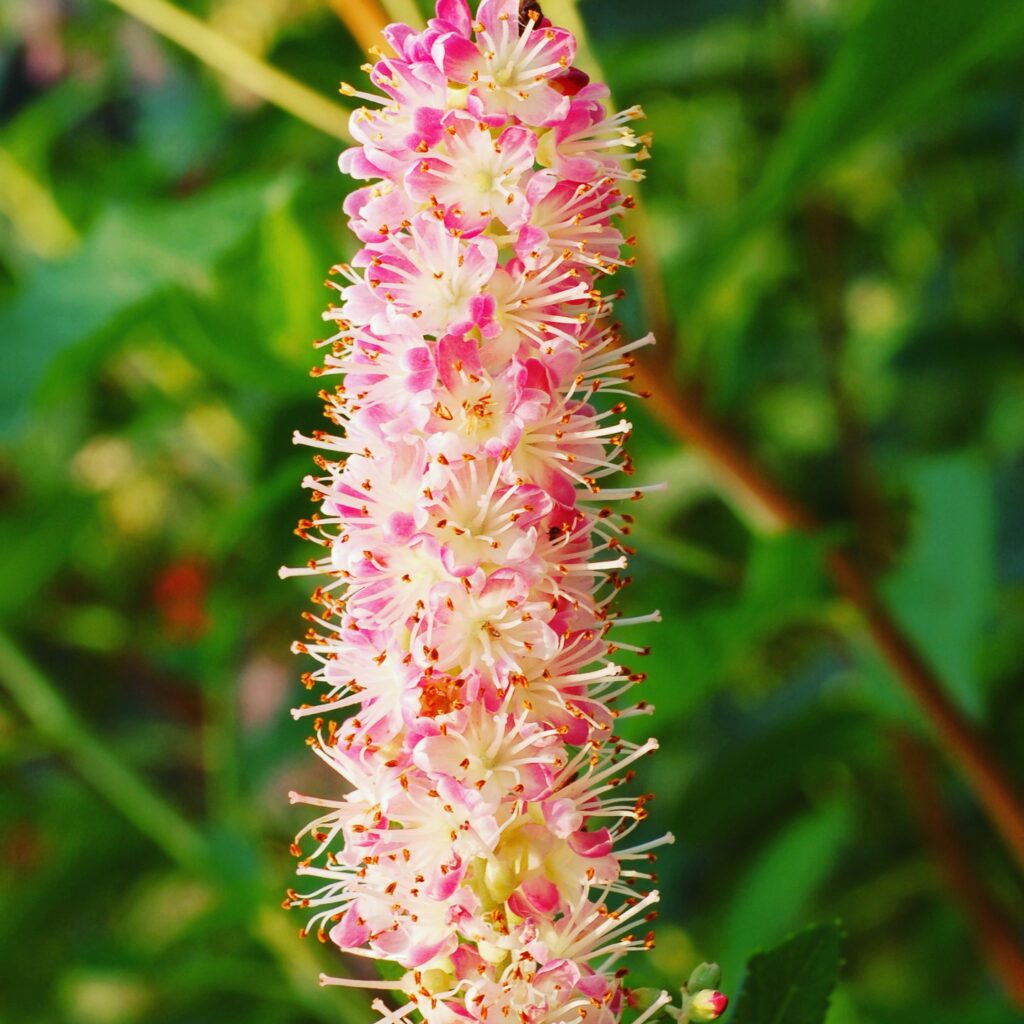
Photo credit: KENPEI, CC BY-SA 3.0 <http://creativecommons.org/licenses/by-sa/3.0/>, via Wikimedia Commons
It’s Meet the Plants Monday!
This week I had a number of different ideas for the plant you’d meet, but a particular plant kept coming up in conversation so much that I had to assume the universe was letting me know that was the one to talk about.
So, I’d like to introduce you to Clethra alnifolia, which goes by the name Summersweet, or just the genus name, Clethra. It’s native to wet areas along the east coast and southeast US, where it might also be called Sweet Pepperbush.

Photo Credit: Photo by and (c)2007 Derek Ramsey (Ram-Man), GFDL 1.2 <http://www.gnu.org/licenses/old-licenses/fdl-1.2.html>, via Wikimedia Commons
Clethra is a small to medium-sized flowering shrub that blooms in mid to late summer with fragrant spikes of white or pink flowers. It does well in sun or part shade, but does appreciate more acidic soil if possible. Because it’s native to wetter sites, it makes a good rain garden or water’s edge plant and attracts many pollinators. It has yellow fall color.
This shrub is generally low maintenance and disease resistant if sited correctly. It can be pruned in later winter if needed and will need the old flower spikes trimmed off in spring, much like a panicle hydrangea.

Spent blooms can be cut off during spring clean-up.
There are a few different popular cultivars of Clethra, but the ones you’ll likely see are ‘Hummingbird’ (smaller with white flowers) and ‘Ruby Spice’ (larger, with pink flowers). Ruby Spice is more desiring of acidic soils, whereas Hummingbird is more adaptable.
?I like this shrub because it provides flowers and fragrance in shadier conditions and because it works well in small spaces. It’s also a pollinator magnet – always a plus in my book!
?Clethra can really struggle to look its best if not sited correctly. It can’t tolerate excessively dry conditions and should be kept watered and well-mulched in full sun. The pink-flowered versions may look chlorotic (yellowing leaves) if the soil pH is too high, which is common in our area. I’ve also noticed that rabbits like to nibble on them a bit, so winter protection could be helpful if that’s an issue.
